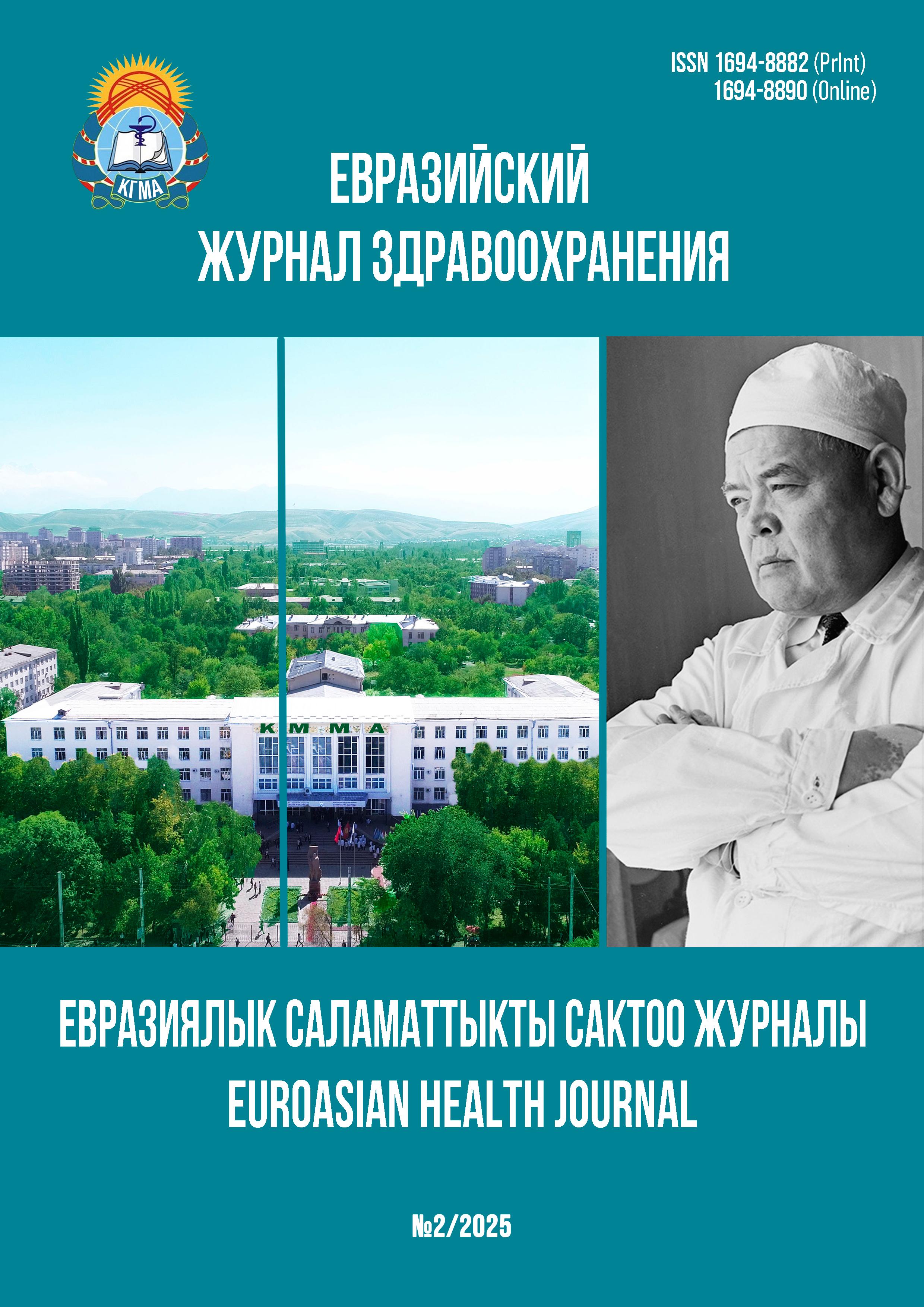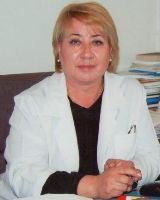THE STRUCTURE OF THE NASAL SEPTUM AND ITS CLINICAL ASPECTS IN PEDIATRIC SEPTOPLASTY (LITERATURE REVIEW)
DOI:
https://doi.org/10.54890/1694-8882-2025-2-202Abstract
Despite the abundance of studies focused on the clinical, diagnostic, and therapeutic aspects of nasal septal deviation, data on the cellular composition and biomechanical characteristics of its structures remain limited and fragmented.
Objective. To summarize and standardize existing data on the microstructure and biomechanics of nasal septal tissues based on a review of literature and internet sources, and to identify priority directions for further research aimed at improving surgical treatment and reducing the risk of postoperative complications.
Materials and Methods. A review of national and international scientific literature, current clinical guidelines, and a comparative analysis of clinical cases was conducted.
Results and Conclusions. The nasal septum, in our opinion, consists of seven layers, each playing a crucial role in maintaining its anatomical integrity and functionality. Knowledge of the anatomical and histological features of these layers and their clinical relevance in septoplasty is essential for modern rhinologic surgery. These aspects are currently underrepresented in educational and scientific literature, and there are no dedicated monographic publications on the topic.
Preservation of the perichondrium and periosteum – structures that ensure the nutrition of cartilage and bone – is a fundamental principle of septoplasty. Understanding the biomechanics of the septal cartilage contributes to the optimization of surgical techniques, helps preserve nasal function, and reduces the risk of postoperative complications.
Thus, awareness of the layered structure and biomechanical properties of the nasal septal cartilage is critical to achieving optimal functional and aesthetic outcomes in septoplasty.
Keywords:
nasal septum, microstructure, mucosa, perichondrium, cartilage, biomechanics, septoplasty, childrenReferences
1. Юнусов А.С., Дайхес Н.А., Рыбалкин С.В. Реконструктивная ринохирургия детского возраста. М: Триада ЛТД; 2016. 143 с. [Yunusov AS, Daikhes NA, Rybalkin SV. Pediatric reconstructive rhinoplasty. Moscow: Triada LTD; 2016. 143 p. (In Russ.)].
2. Бабаханов Г.К. Диагностика и лечение искривления перегородки носа у детей [Диссертация]. Ташкент; 2020. 203 с. [Babakhanov GK. Diagnostika i lechenie iskryvleniya peregorodki nosa u detey [Diagnosis and treatment of nasal septum deviation in children] [dissertation]. Tashkent; 2020. 203 p. (In Russ.)]. Режим доступа: https://dissbor.uz/index.php?route= product/product&path=1459_1712_1716&product_id=775
3. Хасанов С.А., Махсудов С.Н., Бабаханов Г.К. Оториноларингологические и ортодонтические вопросы патологии риномаксиллярного комплекса у детей. Ташкент: Университет; 2022. 284 с. [Khasanov SA, Makhsudov SN, Babakhanov GK. Otorhinolaryngological and orthodontic issues of rhinomaxillary complex pathology in children. Tashkent: University; 2022. 284 p. (In Russ.)]
4. Магомедов М.М., Зейналова Д.Ф., Магомедова Н.М., Старостина А.Е. Функциональное состояние слизистой оболочки полости носа и околоносовых пазух после радикальных и малоинвазивных хирургических вмешательств. Вестник оториноларингологии. 2016;81(2):88‑92. [Magomedov MM, Zeinalova DF, Magomedova NM, Starostina AE. The functional conditions of nasal cavity mucosa and paranasal sinuses following radical and minimally invasive surgical interventions. Russian Bulletin of Otorhinolaryngology. 2016;81(2):88‑92. (In Russ.)]. https://doi.org/10.17116/otorino 201681288-92
5. Шиленкова В.В., Федосеева О.В. Носовой цикл у здоровых взрослых. Российская ринология. 2016;24(2):20‑24. [Shilenkova VV, Fedoseeva OV. The nasal cycle in healthy adults. Russian Rhinology. 2016;24(2):20‑24. (In Russ.)]. https://doi.org/10.17116/rosrino201624220-24
6. Ozdemir S, Celik H, Cengiz C, Zeybek ND, Bahador E, Aslan N. Histopathological effects of septoplasty techniques on nasal septum mucosa: an experimental study. Eur Arch Otorhinolaryngol. 2019;276(2):421-427. https://doi.org/10.1007/ s00405-018-5226-7
7. Карпищенко С.А., Александров А. Н., Шахназаров А.Э., Фаталиева А.Ф., Кучеренко М.Э. Функциональное состояниеполости носа после эндоскопической септопластики. Российская оториноларингология. 2020;19(3):16–21. [Karpishchenko SA, Alexandrov AN, Shakhnazarov AE, Fataliyeva AF, Kucherenko ME. Functional state of the nasal cavity after endoscopic septoplasty. Russian Otorhinolaryngology 2020;19(3):16–21. (In Russ.)]. https://doi.org/10.18692/1810-4800-2020-3-16-21
8. Пискунов Г.З. Физиология и патофизиология носа и околоносовых пазух. Российская ринология. 2017;25(3):51‑57. [Piskunov GZ. Normal and pathological physiology of the nose and paranasal sinuses. Russian Rhinology. 2017;25(3):51‑57. (In Russ.)]. https://doi.org/10.17116/rosrino201725351-57
9. Мадаминова М.А., Нуралиев М.А., Насыров М.В. Заболевания носа и околоносовых пазух. Методическое пособие. 2023. 5,4 п.л. [Madaminova MA, Nuraliev MA, Nasyrov MV. Diseases of the nose and paranasal sinuses: methodological manual. 2023. 5.4 p.l. (In Russ.)].
10. Завалий М. А., Орел А. Н., Крылова Т. А., Балабанцев А. Г., Кушнирек П. А. Регенерация мерцательного эпителия полости носа в норме и после хирургических вмешательств. Российская оториноларингология. 2021;20(1):78–88. [Zavaliy MA, Orel AN, Krylova TA, Balabantsev AG, Kushnirek PA. Regeneration of the nasal cavity ciliated epithelium in normal and post-surgical conditions. Russian Otorhinolaryngology. 2021;20(1):78–88. (In Russ.)]. https://doi.org/ 10.18692/1810-4800-2021-1-78-88
11. Насыров В.А., Солодченко Н.В., Мадаминова М.А. Новые перспективы ольфактометрии. Евразийский журнал здравоохранения. 2024;5:194-200. [Nasyrov VA, Solodchenko NV, Madaminova MA. New perspectives in olfactometry. Euroasian Health Journal. 2024;5:194–200. (In Russ.)]. https://doi.org/10.54890/1694-6405_2023_5_194
12. Молдавская А.А., Храппо Н.С., Левитан Б.Н., Петров В.В. Особенности организации слизистой оболочки и сосудистой системы полости носа: морфофункциональные и клинические аспекты (обзор). Успехи современного естествознания. 2006;5:18–22. [Moldavskaya AA, Khrappo NS, Levitan BN, Petrov VV. Features of the nasal mucosa and vascular system: morphofunctional and clinical aspects. Advances in current natural sciences. 2006;5:18–22. (In Russ.)].
13. Завалий М.А. Сравнительная гистология и физиология мерцательного аппарата респираторного эпителия. Таврический медико-биологический вестник. 2014;17;2(66):46–53. [Zavaliy MA. Comparative histology and physiology of the respiratory epithelial ciliated apparatus. Tavricheskiy mediko-biologicheskiy vestnik. 2014;17(2):46–53. (In Russ.)].
14. Завалий М. А. Морфогенез мерцательного эпителия. Ринологiя. 2014; 1:38-49. [Zavaliy MA. Morphogenesis of ciliated epithelium. Rinologiya. 2014;1:38–49. (In Russ.)].
15. Захарова Г. П., Янов Ю. К., Шабалин В. В. Мукоцилиарная система верхних дыхательных путей. СПб.: Диалог; 2010. 360 с. [Zakharova GP, Yanov YK, Shabalin VV. Mucociliary system of the upper respiratory tract. St. Petersburg: Dialog; 2010. 360 p. (In Russ.)].
16. Исаченко В.С., Мельник А.М., Ильясов Д.М., Овчинников В.Ю., Минаева Л.В. Мукоцилиарный клиренс полости носа. некоторые вопросы физиологии и патофизиологии. Таврический медико-биологический вестник. 2017;20(3):219–226. [Isachenko VS, Melnik AM, Ilyasov DM, Ovchinnikov VY, Minaeva LV. Mucociliary clearance of the nasal cavity. Some aspects of physiology and pathophysiology. Tavricheskiy mediko-biologicheskiy vestnik. 2017;20(3):219–226. (In Russ.)].
17. Хэм А., Кормак Д. Гистология. Том 3. Перевод с англ. М.: Мир; 1983:11. [Ham A, Cormack D. Histology. 3 volumes. Trans. from English. Moscow: Mir; 1983:11. (In Russ.)].
18. Achim G. Beule. Physiology and pathophysiology of respiratory mucosa of the nose and the paranasal sinuses. GMS Current Topics in Otorhinolaryngology – Head and Neck Surgery. 2010;9:1–24. https://doi.org/10.3205/cto000071
19. Bustamante-Marin XM, Ostrowski LE. Cilia and Mucociliary Clearance. Cold Spring Harb Perspect Biol. 2017 Apr 3;9(4):a028241. https://doi.org/10.1101/ cshperspect.a028241
20. Brown WE, Lavernia L, Bielajew BJ, Hu JC, Athanasiou KA. Human nasal cartilage: Functional properties and structure-function relationships for the development of tissue engineering design criteria. Acta Biomater. 2023;168:113-124. https://doi.org/10.1016/j.actbio.2023.07.011
21. Chang LR, Marston G, Martin A. Anatomy, Cartilage. 2022 Oct 17. In: StatPearls [Internet]. Treasure Island (FL): StatPearls Publishing; 2025 Jan. Available at: https://www.ncbi.nlm.nih.gov/books/NBK532964/
22. Abzalova Sh. R., Bobokhonov M.G. Some microstructural features cartilage of the nose septum and their importance in septoplasty. International scientific journal "Science and Innovation. 2024;3(7):190–196. https://doi.org/10.5281/ zenodo.13168887
23. Aksoy F, Yildirim YS, Demirhan H, Özturan O, Solakoglu S. Structural characteristics of septal cartilage and mucoperichondrium. J Laryngol Otol. 2012;126(1):38-42. https://doi.org/10.1017/s0022215111002404
24. Tekke NS, Alkan Z, Yigit O, Bekem A, Unal A, Sahin F, et al. Importance of nasal septal cartilage perichondrium for septum strength mechanics: a cadaveric study. Rhinology. 2014 Jun;52(2):167-71. https://doi.org/10.4193/rhino13.199
25. Salinger S. Cartilage homografts in rhinoplasty: a critical evaluation. Ann Otol Rhinol Laryngol. 1952;61(2):533-41. https://doi.org/10.1177/000348945206100225
26. Gibson T, Davis WB. The distortion of autogenous cartilage grafts: Its cause and prevention. British Journal of Plastic Surgery. 1957;10:257-274. https://doi.org/ 10.1016/S0007-1226(57)80042-3
27. Fry HJ. Interlocked stresses in human nasal septal cartilage. Br J Plast Surg. 1966;19(3):276-8. https://doi.org/10.1016/ s0007-1226(66)80055-3
28. Eitschberger E., Merklein C., Masing, H. Pesch HJ. Tierexperimentelle Untersuchungen zur Verformung des Septumknorpels nach einseitiger Schleimhautablösung [Deviations of septum cartilage after unilateral separation of Mucoperichondrium in rabbits (author's transl)]. Arch Otorhinolaryngol 1980;228(2):135-48. [German]. https://doi.org/10.1007/BF00455341







